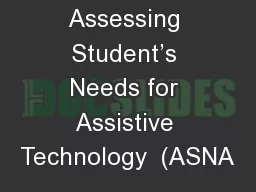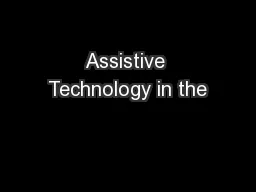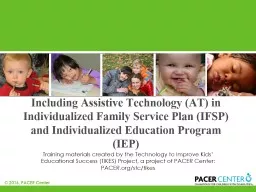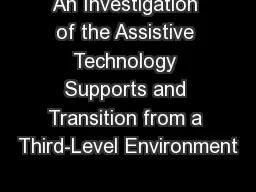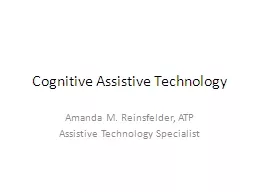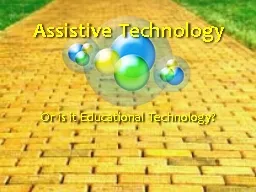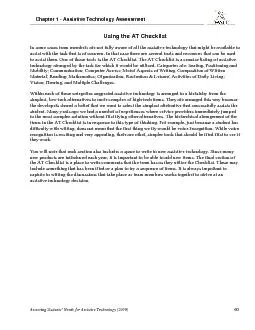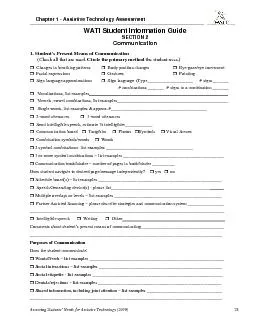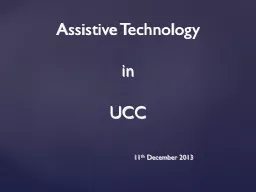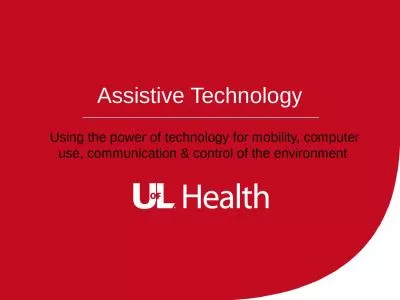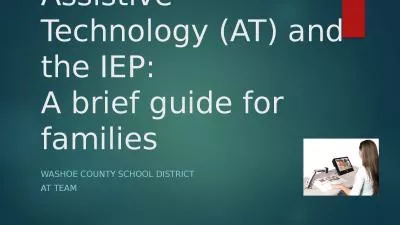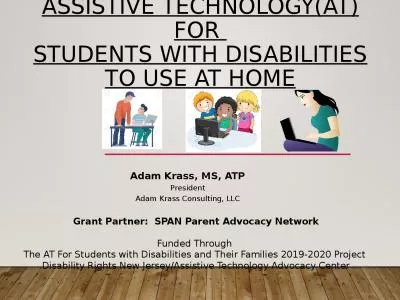PPT-Assessing Student’s Needs for Assistive Technology (ASNA
Author : olivia-moreira | Published Date : 2017-11-13
Heather C Markham MS CS MS RST KY OVR Rehabilitation Technologist But not the entire 525 pages of the ASNAT 5 th Edition 2009 by WATI Amendments to the Individuals
Presentation Embed Code
Download Presentation
Download Presentation The PPT/PDF document "Assessing Student’s Needs for Assistiv..." is the property of its rightful owner. Permission is granted to download and print the materials on this website for personal, non-commercial use only, and to display it on your personal computer provided you do not modify the materials and that you retain all copyright notices contained in the materials. By downloading content from our website, you accept the terms of this agreement.
Assessing Student’s Needs for Assistive Technology (ASNA: Transcript
Download Rules Of Document
"Assessing Student’s Needs for Assistive Technology (ASNA"The content belongs to its owner. You may download and print it for personal use, without modification, and keep all copyright notices. By downloading, you agree to these terms.
Related Documents

